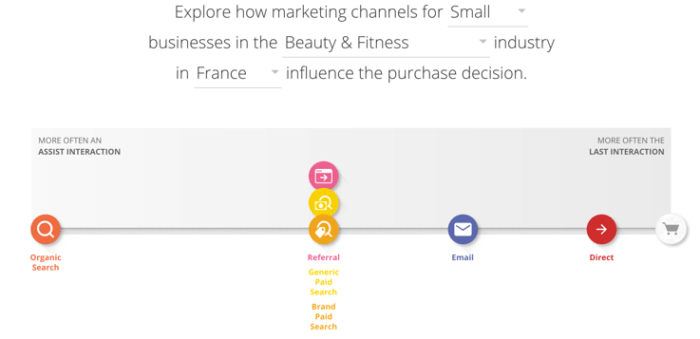Because of its size, profitability and potential, ‘weight loss’ is one of the most popular affiliate marketing niches within the health sector. Health and wellness continue to be relevant topics for content and offers in digital marketing due to the impact of the growing world obesity epidemic.
ADVANTAGES OF WEIGHT LOSS AFFILATE MARKETING
While the online weight loss niche is very profitable, it’s also very competitive, so it’s important to analyse the market, search for opportunities, and offer value to your audience in order to be successful.
Here are some facts and tips to help you succeed in this potentially profitable affiliate sector.
THE POWER OF THE WEIGHT LOSS NICHE
According to a market research report from MarketandMarkets.com, the global weight loss and weight management market is going to be worth around $206.4 billion by 2019. This means a compound annual growth rate of 6.9% between 2014 and 2019. Of this market, the diet segment accounts for the largest share, and North America, the largest regional market.
So, apart from the market value and size, what else makes weight loss an attractive niche?
A successful affiliate knows that segmentation is key to finding the best marketing opportunities. It’s important to be aware that some niches have better prospects: they may have a greater need for your product, could take less time to nurture, and ultimately be more profitable than others.
Steve Billingham Consulting recommends evaluating six characteristics to assess the potential of each niche. It’s worth focusing your marketing efforts on a niche if it meets at least four of the following criteria:
- Means: the prospects should have enough income to afford your product
- Willingness: they should be able to recognise quality and pay for it
- Abundance: there should be enough people interested in your product to sustain your business
- Ease of communication: it should be easy to communicate your marketing messages to this audience
- Credibility: you should either have or be able to build trust so your audience takes your offers seriously
- Awareness: it’s easier to target an audience that is familiar with your product or service than having to educate it
The weight loss niche is so vast that it ticks most of these criteria. However, I’m not going to pretend that it’s easy money, but since this market has many different types of audience, you can succeed by focusing on the less competitive areas or those with more growth potential.
ADVANTAGES OF THE WEIGHT LOSS SECTOR
- No need to be an expert in the field
Because there’s so much information out there, you don’t have to be an expert in health to create content to help others to lose weight. The topics and audience are also diverse, so there’s something for everyone.
- No investment needed
Affiliate marketing presents a great opportunity for those interested in starting a business online but have limited resources. Because of its nature, you don’t need to have start-up capital or to bear administrative costs such as inventory, distribution and customer service.
However, you will need to have a passion for the niche, invest time in creating good quality content and also find creative ways to reach your target audience. And like any other business, once you start making money, you’ll have the opportunity to invest in digital marketing tools to expand it.
- Wide variety of offers
The weight loss niche offers many different products and services for a wide variety of customers. Therefore, you’ll find many different affiliate programmes and networks that specialise in weight loss offers, such as MoreNiche.
5 STEPS TO A SUCCESSFUL WEIGHT LOSS NICHE
1: DO YOUR RESEARCH
As with any other business, if you are venturing into affiliate marketing, you will need to do some research before creating a website or running any campaigns.
Even though weight loss is an evergreen market, which means its demand is continuous and steadily growing with time, you will still need to do some research to find the most profitable products and trends. You will also need to make a thorough analysis of the competition, since if you find yourself competing against other big players, it may take a lot longer to get results.
Search for market trends
The weight loss market is dynamic and there are always new trends. You can use tools like these thinkwithgoogle.com to help you explore and understand the market.
One of the most useful tools is Google Trends. This allows you to explore related topics and searches, as well as finding the seasonal peaks and growing regional markets. As you can see from the image below, the weight loss market is an evergreen and seasonal market. You can clearly spot a peak in interest in the first months of the year and a decline as the year ends.
If you are thinking of exploring new or less competitive regional markets, this tool can give you a good insight into the trending regions.
The related topics and queries lists are also a great way to find potential products and keywords you’d probably never thought of. You can explore these topics in even greater detail to optimise your content strategy and attract more traffic, which you can then funnel into your specific campaigns.
This tool will also show you the customer journey to an online purchase in a particular country. In the following image, you can see that we have searched for marketing channels for small businesses in France.
You’ll find valuable information that will help you create your marketing strategies. For example, if you wish to target a French audience, you’ll discover that organic searches tend to play an important assisting role in the early stage of a sale while email and paid searches are more likely to be used towards the end.
Google Shopping Insights is also a useful tool if you are interested in focusing on the U.S. market (and the only one currently available). It shows product search trends over time in the form of heat maps at state, city or regional level which will be particularly helpful with targeting your weight loss pills if you are thinking of running paid campaigns.
2: NARROW DOWN YOUR TARGET WEIGHT LOSS AUDIENCE AND KEYWORDS
Even if a market is viable and profitable, it’s important to ascertain whether you, as an individual affiliate, can compete in it. Unless you already have a well-ranked website or a targeted prospect list, it will be challenging to achieve immediate results if you just focus on the most common audiences and keywords.
Therefore, finding niche keywords could mean the difference between succeeding or failing in the weight loss market. Let’s consider the following when narrowing down your keywords:
Use keyword research tools to find sub-niche opportunities
There are many tools available online, however you can’t go wrong with the good old Keyword Planner Tool from Google AdWords. Even though it limits some features if you don’t have an active campaign running, you can still find areas of opportunity for long-tail keywords.
The example below illustrates this. When searching for “buy diet pills” keywords Google suggests, among others, the keyword “phentermine”. This information will be helpful when you start choosing the products to promote, as you could perhaps promote phentermine diet pills or alternative products such as PhenQ.
Other tools that have a free version and are worth trying before investing in an upgrade are Serpstat and SEMrush (image below). These also came up with other keyword ideas, when searching for “buy diet pills”; SEMrush suggested “JaDera diet pills” which could be another idea for content creation or as a product to promote.
Go for high demand and low supply
Just as in the economic principle of supply and demand, you should expect a higher return from the markets that aren’t being fulfilled. In SEO terms, there’s more chance of higher rankings in the search engines when there’s less content available for more people searching.
The phrase “weight loss pills” has a very high search volume on AdWords Keyword Planner. You can also check this directly on Google:
As you can see, this produced over 23 million search results. This clearly will be a very difficult keyword to compete with. So go ahead and search for other alternatives. For example, “caffeine free diet pills” returns 482,000 search results.
You can also find further keyword ideas from Google at the bottom of the page for this search:
Find opportunities in regional and international markets
Another way to find less competitive keywords is to opt for international audiences. Just as the Google Trends tool is useful for pinpointing popular regional audiences, AdWords Keyword planner is also great for the analysis of international keywords.
Even though it sounds simple to follow the same process, it takes more time and research to understand the differences in market preferences, seasons, language, terms, etc. So when you proceed with your affiliate marketing strategy, it’s important not to assume the international market will behave in the same way as your home market.
3: CARRY OUT COMPETITOR ANALYSIS
After you have narrowed down your target audience and found keywords with potential, you need to be aware of what the competition is doing. And th
It might sound simple, but competition in the weight loss niche is fierce, and you have to stand out if you want to succeed.
You can start by navigating through the SERPs for your keywords, looking for Facebook or other social media pages and paid ads, and checking what others are doing. However, you shouldn’t succumb to the copycat strategy; your approach has to be unique with the aim of delivering value to your target audience. You can find other tips on competitor analysis in Emily Matthews’ article here.
4: UNDERSTAND THE WEIGHT LOSS MARKET AND YOUR TARGET AUDIENCE
Market segmentation
The weight loss market has many segments, and consumers have different attitudes, behaviours and motivations. Therefore, always focus on a specific weight loss segment and address the motivations and needs of that group.
Secondary market research can offer great insight into your target audience and will help you prepare a better marketing strategy.
According to a study by C. Grebitus, M. Hartmann and N. Reynolds on the drivers for weight reduction strategies, women are more likely to change their diets while men become more physically active. This explains why products such as diet pills and nutrition plans are usually targeted towards a largely female audience.
Reports and surveys, such as the global health and wellness study from Nielsen, analyse customer behaviour and consumer trends. You can see in the image below that most consumers rely on diet and exercise to lose weight rather than diet pills or prescribed drugs. These chosen methods to lose weight could also be a form of market segmentation.
Another factor affecting segmentation in the weight loss market is the level of involvement. Some consumers are more willing to make changes to their diets than others, and there are different products and behaviours in each group.
For example, a person with a low involvement would be interested in an easy solution that requires a minimum change to their habits, such as a sugar-free replacement drink or a meal replacement shake. On the other hand, consumers with a medium level of involvement would perhaps be interested in a dietary supplement that could complement their diet and exercise routine.
Motivators are a great way to segment the weight loss market. Examples of these are:
- To improve specific health conditions: blood pressure, cholesterol and glucose levels, heart disease, etc.
- To look better or change body image
- To enhance self-confidence and mood
- To improve performance in physical activity
- To get back in shape after pregnancy and other conditions
- Social and cultural pressure
Once you have decided on your target audience, you can then create a customer journey map to help you develop your affiliate marketing strategy more effectively. Here is an example of a customer’s journey for a persona or target audience.
Weight loss market seasonality
One of the main characteristics of the weight loss niche is seasonality. This means that demand over a period of time has a regular and predictable pattern each calendar year.
The demand pattern tends to spike in January and maintains a relatively high demand during the first two quarters, before experiencing a decline as the year progresses, and finally reaching its lowest point in December.
It’s therefore wise as an affiliate in the weight loss sector to expect variations in traffic and earnings due to its seasonal nature. You’ll need to adapt your marketing strategy to allow for the fluctuating market demands in order to keep a steady flow of income throughout the year.
5: FOCUS ON JUST A FEW PRODUCTS
It’s tempting to go for as many products as you can find to promote and try your luck with them all. However, you will be more likely to succeed if you concentrate your marketing efforts on a few offers and don’t spread yourself too thin.
How to find the best affiliate offers in the weight loss niche
If you have a specific product in mind, you can just search for that brand together with the words “affiliate program”. In the example below, we have searched for a particular weight loss pill brand “PhenQ”. In this case, the affiliate program will be found on the MoreNiche network, where you can find conversion and demographics data that will help you decide which product(s) to promote.
You can also sign up to affiliate networks specialising in health, fitness and weight loss. By signing up to these specialist niche networks, you’ll have the opportunity to explore and join different offers within the same sector without having to manage multiple accounts, payouts, data statistics, affiliate managers, etc.
Once you’ve joined a trusted health and weight loss affiliate network such as MoreNiche, don’t forget to:
- Explore all the available offers within the weight loss niche
- Compare commission percentages, conversion rates, earnings and demographic data
- Check the demographic data to confirm that the offers market their products to your target audience
- Look for any traffic restrictions
- Get in touch with an affiliate manager who will give you more insight into the weight loss offers and advise you on what could work best
When choosing a weight loss product to focus your promotions on, be on the lookout for temporary fads, scams, or products with questionable reviews and avoid these. Always make a thorough analysis of each product – don’t just go for an attractive commission.
Think long term
Now that you have seen why the weight loss niche is so popular and the opportunities it can provide, don’t forget that in order to maintain a stable affiliate business in this sector, you must continue the process of research to keep up-to-date with the digital marketing and consumer trends.
Have a look at MoreNiche’s Weight Loss and Fitness infographic below which summarises the weight loss niche…
I hope this article has helped to show you just how much potential there is for affiliate marketers in the weight loss niche, and how, with the right planning and focus, you could succeed too. If you are interested in seeing more weight loss high-converting offers, visit our weight loss section on the MoreNiche website and sign up here to get started and make the most of this profitable niche.


















2 replies on “A GUIDE TO WEIGHT LOSS NICHE AFFILIATE MARKETING”
Great Article Karla!!
The WEIGHT LOSS niche seems to be a secure bet.
Thanks for sharing this great article!